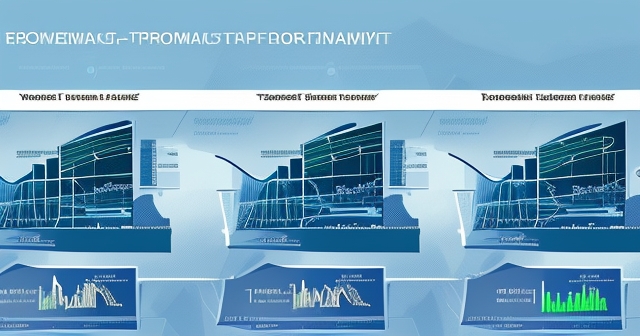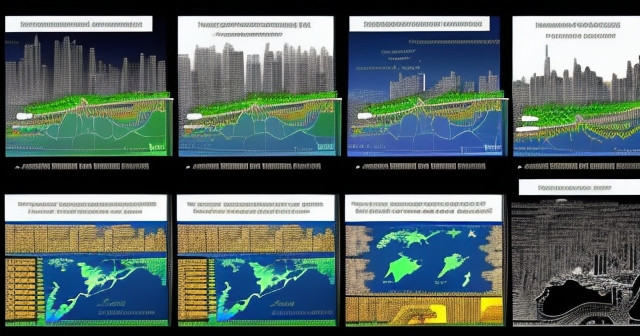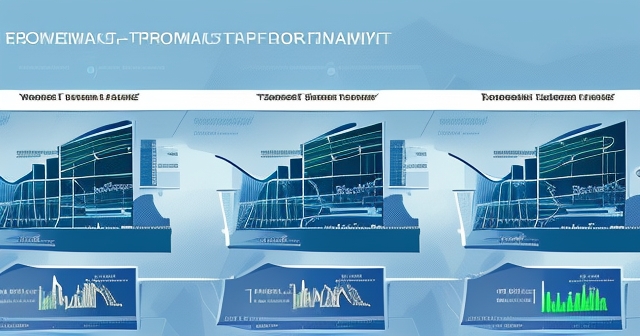Introduction: Navigating Economic Currents Through David Rosenberg’s Lens
As investors, we constantly seek to understand the complex forces shaping the financial landscape. Economic forecasts, market analyses, and policy critiques all play a crucial role in informing our decisions. Among the myriad voices offering insights, few are as consistently thought-provoking and often contrarian as that of David Rosenberg. A seasoned economist with a distinguished career spanning decades, Rosenberg is known for his meticulous data analysis and his willingness to challenge prevailing market narratives.
In this comprehensive exploration, we delve into the core of David Rosenberg’s economic views, drawing directly from his commentary and analysis over specific periods. Our goal is to dissect his perspectives on critical issues such as recession risks, Federal Reserve policy, structural economic challenges, and the state of financial markets. By understanding his often cautious outlook, we can gain a valuable perspective to complement our own research and navigate potential turbulence.
Whether you are just beginning your investment journey or seeking to deepen your understanding of technical analysis and macroeconomic influences, comprehending the insights of experienced professionals like Rosenberg is paramount. His approach, rooted in a deep understanding of historical cycles and economic data, provides a robust framework for evaluating the current environment. Let’s embark on this educational journey together, much like a student seeking guidance from a sage, to unpack the wisdom embedded in Rosenberg’s analysis.

Here are some key points about Rosenberg’s investment approach:
- Data-Driven: Rosenberg relies heavily on meticulous data analysis.
- Contrarian View: He often challenges prevailing market narratives.
- Historical Context: His insights are deeply rooted in historical economic cycles.
The Sage’s Foundation: Rosenberg’s Background and Approach to Economic Analysis
To truly appreciate David Rosenberg’s analysis, it helps to understand his foundation. His career path is marked by significant roles that have honed his expertise and established his authority in the field. Holding B.A. and M.A. degrees in economics from the University of Toronto, he built a strong academic base.
His professional journey includes tenures as Chief North American Economist at Bank of America Merrill Lynch, Senior Economist at BMO Nesbitt Burns, and the Bank of Nova Scotia. Prior to launching his own firm, Rosenberg Research & Associates in January 2020, he served as Chief Economist & Strategist at Gluskin Sheff. These roles placed him at the forefront of economic forecasting and strategy for major financial institutions, exposing him to diverse market conditions and refining his analytical skills.
Rosenberg’s expertise has not gone unnoticed. He has been recognized in prominent industry surveys, such as the Brendan Wood International Survey and the US Institutional Investor All American All Star Team. Such accolades underscore his standing and credibility within the economic and investment community. His approach is characterized by a forensic examination of data, often looking beyond headline figures to find underlying trends and risks that others might overlook. He combines a deep understanding of economic theory with practical market experience, allowing him to bridge the gap between academic concepts and real-world investment implications.
This rigorous, data-driven methodology, combined with a willingness to express views that diverge from consensus, forms the bedrock of his “Sage” archetype. He seeks not to sensationalize, but to educate and prepare investors for potential realities often obscured by optimism or inertia. It’s about cutting through the noise to identify the core economic truths.

Decoding the Signals: Rosenberg’s Recurrent Recession Warnings
A recurring theme throughout much of David Rosenberg’s commentary, particularly during periods we examine, is the persistent warning of recession risks. He doesn’t merely whisper these concerns; he sounds a drumbeat, often stating unequivocally that recession risks are “alive and well.” This isn’t just a theoretical possibility for him; it’s a tangible threat evidenced by specific data points he meticulously tracks.
Rosenberg has a keen eye for identifying pockets of the economy that are slowing down even when aggregate data might appear robust. He emphasizes areas like jobs and consumer spending as crucial indicators. While a headline jobs number might seem strong, he looks beneath the surface, analyzing details such as wage growth, hours worked, and the types of jobs being created to discern underlying health or weakness.
His warnings escalated significantly at times, reaching a point where he asserted that key recession indicators were “screaming” that a slowdown had already begun. Specifically, based on his analysis in 2019, he suggested that the recession likely commenced in the first quarter of that year. This demonstrates his conviction and his reliance on specific, quantifiable signals rather than abstract notions.
Why such a focus on recession? Because downturns fundamentally alter the investment landscape, impacting everything from corporate earnings and stock valuations to interest rates and currency movements. For any investor, understanding the potential for recession is not just about predicting the future but about managing risk in the present. Rosenberg’s consistent warnings serve as a vital reminder to remain vigilant and look beyond the prevailing sentiment.

The Anatomy of a Slowdown: Specific Indicators Rosenberg Emphasizes
What specific signals does David Rosenberg pay attention to that lead him to forecast recessions? He doesn’t rely on a single magic bullet but rather a confluence of factors, acting as a diagnostician for the economy. Beyond the headline figures, he examines the granular data that reveals underlying stresses.
As mentioned, he focuses intently on the labor market, but not just the unemployment rate. He scrutinizes metrics like the growth rate of non-farm payrolls, average hourly earnings, and manufacturing payrolls. Slowdowns or outright declines in these areas, even while the headline unemployment remains low, can signal weakening demand or hiring caution among businesses.
Consumer spending is another critical area. Rosenberg looks at retail sales data, consumer confidence surveys, and spending patterns. A significant portion of economic activity is driven by consumers, so any retrenchment in their willingness or ability to spend serves as a major red flag. Are people cutting back on discretionary purchases? Are they relying more on credit? These are the questions his analysis addresses.
He also pays close attention to business investment, manufacturing indices (like the ISM Manufacturing PMI), and inventory levels. An increase in inventories relative to sales, for example, can indicate that companies are producing goods consumers aren’t buying, often a precursor to production cuts and layoffs.
Perhaps most famously, economists like Rosenberg monitor yield curves, particularly the spread between long-term and short-term government bond yields. An inversion of the yield curve (where short-term yields rise above long-term yields) is a historically reliable, though not infallible, predictor of recession. Rosenberg has often highlighted the signals from the bond market as part of his warning chorus.
By integrating these diverse indicators – from the labor market and consumer behavior to manufacturing and bond yields – Rosenberg builds a holistic picture of the economy’s health, allowing him to identify potential vulnerabilities before they become apparent in the aggregate data.
| Indicator | Importance |
|---|---|
| Non-Farm Payroll Growth | Reflects the health of the labor market |
| Consumer Spending | Drives a significant portion of GDP |
| Yield Curve | Predictor of recession risks |
Lessons from History: Comparing Current Risks to Past Downturns
David Rosenberg’s analysis is deeply informed by historical economic cycles. He frequently draws parallels between current conditions and past periods leading up to recessions, arguing that understanding history is crucial for navigating the present.
He has pointed to “excesses” in markets that he views as similar to those observed before previous turning points. What does he mean by “excesses”? This can refer to inflated asset valuations (like stocks or real estate), excessive corporate debt, or speculative bubbles in certain sectors. Recognizing these patterns requires a historical perspective, comparing today’s market environment to periods like the late 1990s (dot-com bubble) or the mid-2000s (housing bubble).

Rosenberg has described stock market volatility at certain times as an “epic roller coaster ride,” drawing comparisons to painful historical periods for investors such as 1974, 1982, 1990, 1998, 2001, and 2007. These years represent significant market corrections or the onset of recessions. By invoking these specific dates, he provides context for the potential severity of current market movements, reminding investors that significant drawdowns are not unprecedented.
Furthermore, his critique of the Federal Reserve’s actions is often grounded in history. He has argued that the Fed has consistently made interest rate “mistakes” that have contributed to preceding recessions. By examining the sequence of monetary policy decisions and subsequent economic outcomes in past cycles (like the late 1990s or the mid-2000s), he finds patterns that he believes are being repeated, potentially leading to a similar outcome.
This historical lens is a key component of Rosenberg’s EEAT framework – it demonstrates deep experience and expertise by connecting current events to long-term patterns, lending authority and credibility to his warnings. For you, as an investor, understanding these historical parallels can help temper expectations during bull markets and prepare you for the possibility of downturns, recognizing that economic cycles are a fundamental reality.
A Critical Eye on the Fed: Monetary Policy Decisions Under Scrutiny
David Rosenberg frequently directs a critical gaze towards the Federal Reserve and its monetary policy decisions. He views the Fed’s actions as having a profound impact on the economy and markets, and he is not shy about identifying what he perceives as missteps.
His central critique often revolves around the timing and magnitude of interest rate adjustments. He has argued, for instance, that the Fed hiked interest rates “too far” in the tightening cycle leading up to 2019. The conventional wisdom is that the Fed tries to engineer a “soft landing,” raising rates just enough to cool inflation without triggering a recession. Rosenberg’s historical analysis suggests the Fed often overshoots, tightening monetary conditions too much and thereby contributing to the subsequent downturn.
Beyond just the rate levels, Rosenberg also analyzes the *pace* of tightening and easing. He has suggested that even if the Fed were to cut rates (as it did in 2019), it might be “too late” to prevent a recession. He bases this on historical precedent, noting that since the 1990s, once certain economic indicators have deteriorated significantly, Fed rate cuts have often occurred alongside, rather than in anticipation of, a recession. In other words, policy easing can sometimes confirm that the downturn is already underway, rather than successfully averting it.
His analysis extends to interpreting the Fed’s communication and internal deliberations. By scrutinizing Fed minutes and statements, Rosenberg looks for signs that the central bank’s “worst fears” about the economy are materializing. He views shifts in their language and projections as key signals about their outlook and potential future actions.

Understanding Rosenberg’s perspective on the Fed is vital because monetary policy is a primary driver of liquidity, borrowing costs, and economic growth. His warnings about potential policy errors highlight the risks associated with the Fed’s influence and encourage investors to consider how changes in monetary conditions might impact their portfolios.
Interest Rate Dilemmas and the Challenge of Policy Timing
Let’s delve deeper into David Rosenberg’s analysis of the Federal Reserve’s interest rate decisions, as this is a cornerstone of his critique. He sees interest rate policy as a powerful but often blunt instrument, capable of both stimulating and stifling economic activity.
His point that the Fed potentially hiked rates “too far” before the challenges of 2019 implies a belief that monetary policy became overly restrictive. Raising rates makes borrowing more expensive for businesses and consumers, which can cool demand and inflation. However, if rates go too high, too quickly, they can choke off economic growth, leading to reduced investment, slower hiring, and ultimately, a recession.
The challenge of policy timing is central to Rosenberg’s argument that Fed rate cuts might come “too late.” Central banks operate with a lag. The full effects of an interest rate change are not felt immediately but unfold over several months. This means the Fed is constantly trying to forecast the economy’s state 6-18 months into the future. If they wait too long to ease policy after economic weakness appears, the momentum towards a recession may already be irreversible.
Rosenberg points to historical examples since the 1990s where the Fed began cutting rates, only for a recession to follow shortly thereafter. This historical pattern, he suggests, indicates that the initial rate cut often signals that the Fed has recognized the danger, but the wheels of recession are already in motion. This perspective challenges the idea that Fed easing is always a signal that the economy is out of the woods or that the central bank has successfully navigated a slowdown.
He also connects stock market volatility to the Fed’s actions, specifically mentioning the process of the Fed “unwinding its balance sheet.” After periods of quantitative easing (QE), where the Fed buys assets to inject liquidity, the reverse process (quantitative tightening or QT) involves selling those assets or letting them mature without reinvesting. This reduces the money supply and can act like a de facto interest rate hike, removing liquidity from the financial system and potentially contributing to market instability.
By analyzing both the interest rate path and balance sheet management, Rosenberg provides a comprehensive view of the Fed’s influence and the potential risks associated with its policy choices for economic stability and market performance.
Deeper Cracks: Structural Economic Headwinds like Student Debt and Housing
Beyond the cyclical concerns of recession and monetary policy, David Rosenberg also highlights specific structural issues that he believes represent deeper cracks in the foundation of the U.S. economy. One significant example he has pointed to is the burden of student debt.
At the time of his commentary, outstanding student debt totaled a staggering $1.6 trillion. Rosenberg argues that this massive level of debt has profound economic consequences. For young adults, carrying significant student loan payments can delay or prevent major life decisions and expenditures that are crucial for economic growth.
Specifically, he contends that student debt prevents a “normal” U.S. housing market. Why? Because debt levels affect a person’s ability to qualify for a mortgage and their capacity to save for a down payment. If a large segment of the population is burdened by student loans, their entry into the housing market is inhibited. This reduces demand for homes, impacts construction, and has ripple effects throughout the economy (e.g., demand for furniture, appliances, landscaping, etc.).
This focus on student debt demonstrates Rosenberg’s ability to identify specific, tangible economic issues with broad macroeconomic implications. It’s not just an abstract concept; it’s a real burden affecting millions of individuals and, in aggregate, shaping the performance of key sectors like housing.

While the provided data specifically highlights student debt and its link to housing, Rosenberg’s general approach suggests he is always looking for other structural impediments to growth or areas of excessive leverage that could pose long-term risks. Understanding these underlying issues is crucial, as they can dampen the effectiveness of monetary or fiscal stimulus and make the economy more vulnerable to downturns.
For us as investors, recognizing these structural headwinds means acknowledging that the economic recovery or expansion might be slower or more fragile than headline data suggests. It prompts us to consider which sectors or companies might be disproportionately affected by these long-term challenges.
Assessing the Market Mood: From ‘Denial’ to ‘Excesses’ and Volatility
David Rosenberg doesn’t just analyze the raw economic data; he also assesses the prevailing sentiment in financial markets. He has described a “state of denial” gripping the market regarding underlying economic risks. What does this imply? It suggests that investors, collectively, might be overly optimistic or complacent, potentially underestimating the likelihood or severity of a recession or other economic headwinds that Rosenberg identifies.
This “state of denial” can manifest in various ways, such as maintaining high valuations for stocks despite weakening economic fundamentals, ignoring cautionary signals from bond markets, or exhibiting excessive enthusiasm for speculative assets. Rosenberg’s role, in this context, is to provide a dose of realism, highlighting the disconnect he perceives between market pricing and economic reality.
He also points to what he calls “excesses” in markets, reminiscent of those seen before past downturns. These excesses could include elevated price-to-earnings ratios for stocks, high levels of corporate or consumer debt, or speculative bubbles in specific asset classes. Recognizing these excesses is part of his historical analysis, identifying patterns that have historically preceded significant market corrections.
| Market Mood | Characteristics |
|---|---|
| Denial | High valuations despite risk |
| Excesses | Speculative bubbles in asset classes |
| Volatility | Rapid price swings and uncertainty |
The result of this potential disconnect between sentiment and reality, combined with underlying economic risks, can be significant market volatility. As mentioned earlier, Rosenberg has compared recent periods of volatility to historical “epic roller coaster rides.” Volatility represents uncertainty and rapid price swings, making it challenging for investors to navigate.
When Rosenberg speaks of volatility or the potential end of a bull market (as he did in late 2018), he is directly addressing the concerns of his target audience – investors. His analysis suggests that market conditions may be fragile, prone to sudden shifts, and perhaps overdue for a significant correction after a prolonged period of gains. This perspective is crucial for investors who need to manage risk and avoid being caught off guard by sharp downturns.
His assessment of market mood and conditions provides a valuable counterpoint to sometimes excessive optimism, urging investors to maintain a cautious and disciplined approach.
The Impact of Policy Choices: Fiscal and Trade Measures
David Rosenberg’s analysis extends beyond monetary policy to encompass the impact of government fiscal policies and international trade measures. He views these policies as significant factors shaping the economic environment and posing potential risks.
He has offered strong criticism of specific fiscal policies, such as the GOP tax plan implemented in 2017. Rosenberg labeled this plan as potentially “devastating for future generations,” implying concerns about its impact on government debt levels and long-term fiscal sustainability. By questioning the “Republican fiscal principles” underlying the plan, he highlights his view that it represents a departure from traditional conservative fiscal prudence, prioritizing short-term stimulus over long-term responsibility.
His commentary also addresses the impact of trade policy, specifically focusing on tariffs and the resulting global trade war initiated during the Trump administration. In commentary from April 2025 (as per the provided data), he explicitly discusses Trump’s reciprocal tariffs, stating that they initiated a global trade war.
Rosenberg’s view on the trade war is unequivocally negative. He foresees “absolutely nothing good coming out of this at all for the world economy.” This strong statement reflects his belief that tariffs and trade disputes disrupt global supply chains, increase costs for businesses and consumers, reduce international trade volumes, and ultimately act as a drag on global economic growth. Trade wars create uncertainty, reduce efficiency, and can lead to retaliatory measures that harm businesses and economies on all sides.
By analyzing these fiscal and trade policies, Rosenberg underscores the fact that government actions have real and significant economic consequences. His critiques are based on his assessment of their likely long-term impact, rather than their stated intentions. For investors, understanding how these policies can affect industries, corporate profitability, and overall economic growth is essential for portfolio construction and risk management.
Navigating the Outlook: What Rosenberg’s Analysis Suggests for Investors
So, what does David Rosenberg’s consistently cautious and often bearish outlook mean for you as an investor? It’s not about panicking or abandoning the market entirely. Instead, it’s about incorporating his insights into a more informed and potentially more defensive investment strategy.
Firstly, his recession warnings highlight the importance of portfolio resilience. If you agree with his assessment that economic downturns are a significant risk, you might consider reducing exposure to highly cyclical stocks, increasing allocations to defensive sectors (like consumer staples or healthcare), or raising your cash position. It encourages a focus on companies with strong balance sheets, stable earnings, and the ability to weather an economic storm.
His critique of the Federal Reserve suggests that we shouldn’t blindly assume the Fed can always prevent a recession or that policy easing will immediately restore robust growth. This means tempering expectations for market rallies driven solely by hopes of Fed intervention and recognizing that monetary policy operates with lags and faces limitations.
Rosenberg’s emphasis on structural issues like student debt or the negative impact of trade wars reminds us that economic growth faces underlying headwinds. This necessitates a long-term perspective, understanding that some challenges are not easily resolved and may impact specific sectors or the overall growth potential of the economy for years to come.
His assessment of market excesses and volatility underscores the importance of valuation and risk management. In a market potentially in a “state of denial,” avoiding overvalued assets becomes paramount. Volatility is a normal part of markets, but periods of heightened volatility, especially when coupled with economic weakness, demand a disciplined approach – perhaps reducing leverage or using hedging strategies.
Ultimately, Rosenberg’s analysis serves as a valuable counterpoint to potentially excessive market optimism. It doesn’t provide a simple roadmap but equips you with a framework for critical thinking. By considering the risks he highlights, you can make more informed decisions, manage your portfolio with greater awareness of potential downsides, and ultimately, navigate the complex economic landscape with enhanced preparedness. His insights empower you to look beyond the headlines and understand the deeper economic forces at play.
economist david rosenbergFAQ
Q:What are the primary themes in David Rosenberg’s economic analysis?
A:Key themes include recession risks, Federal Reserve policy critiques, and structural economic challenges.
Q:How does Rosenberg assess the market mood?
A:He identifies states of denial and excesses in valuations, suggesting that optimism may overlook underlying risks.
Q:What structural issues does Rosenberg focus on in the economy?
A:He highlights issues such as student debt and its impact on the housing market as significant structural headwinds.

留言